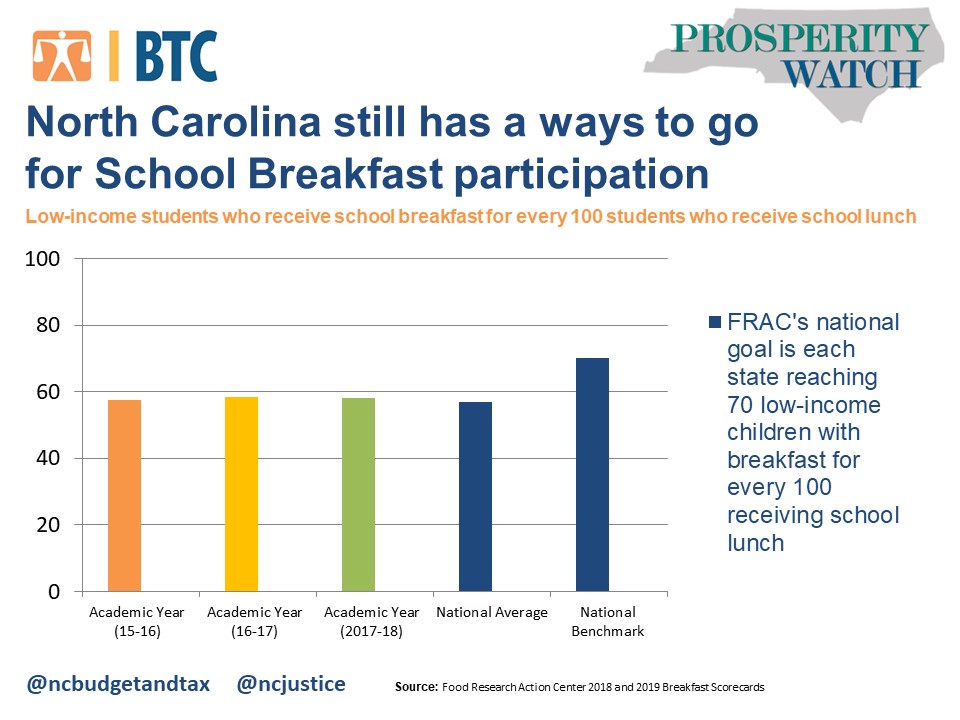On Feb. 13, the Food Research & Action Center (FRAC) released their School Breakfast Scorecard. Each school year the report examines the reach of the School Breakfast Program, nationally and in each state, by exploring the impact of trends and policies that affect participation rates. Studies show there are many advantages to students starting the day with a healthy breakfast. Students who participate in school meal programs are more likely to have a better academic performance, increased class participation, higher test scores and reduced behavioral problems among other benefits. The report stated almost 12.5 million low income children participated in the School Breakfast Program on a average school day across the nation in the 2017-18 school year. While many children have access to the nutrition needed to help them thrive, there are still steps that can be taken to increase access and participation rates in North Carolina.
North Carolina is ranked 7th in the nation for school breakfast participation. Even with a high ranking, there are still too many children missing out on receiving the nutrition they need to learn and thrive. In the state, almost 397,000 low income children participated in the national school breakfast program, a 1.6 percent decrease over the previous year. Over the past few years, North Carolina has maintained a steady pace in participation rates, not significantly decreasing or increasing our numbers. N.C. is currently reaching 58.2 low-income children for every 100 that receive free and reduced priced lunch. FRAC has set a national goal of each state reaching 70 low-income children with school breakfast for every 100 receiving school lunch. If North Carolina met this standard, 80,000 more kids would eat breakfast per school year, for a total of 477,000 children, resulting in an increase of federal funding of up to $22.8 million. With so much money on the line,there are a few things North Carolina can do to ensure more children have access to a healthy breakfast to start their day off right.
FRAC suggests the best way to maximize school breakfast participation is by using a combination of the implementation of innovative breakfast models and the Community Eligibility Provision (CEP). CEP allows high-poverty schools to offer breakfast and lunch at no charge to all students, not just low-income students. This method eliminates the meal application process and dismantles stigmas students face when identified as someone who requires Free and Reduced Priced meals. These breakfast models further eliminate the stigma and barriers to meal access by making breakfast apart of the natural school day. The combination of the two allows schools to overcome common barriers of breakfast participation, creates a simplified systems for administrators, and has shown to have an overall improvement on the financial viability of school nutrition programs.
For more information on the School Breakfast Program and participation rates, check out the School Breakfast Scorecard.
 Justice Circle
Justice Circle 